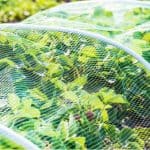Last updated on May 9th, 2022
Our site is reader supported, this means we may earn a small commission from Amazon and other affiliates when you buy through links on our site.
Bay trees are incredibly popular, mainly for the pungent leaves they produce that can be used in a variety of dishes, as well as for their ability to create ornamental designs. You can grow bay trees as a wonderful centrepiece in a herb garden, as an elegant guardian on either side of your front door, or as a plant that you can use for punctuating your border gardens and adding the vertical shape and height you really desire.
The one thing that bay trees do need is a sheltered position in full sun and they can be tender so protection in winter to protect them from hard frost (is essential but easily provided) by using fleece and moving to a sheltered position if grown in pots.
How to grow bay trees
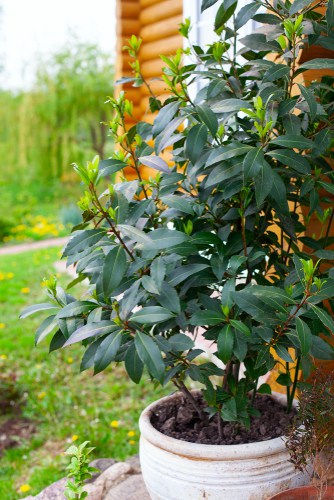
Growing them in pots and containers
Bay trees can either be grown in the ground or in pots. They can adapt well, however, they will do better grown in containers.
If you grow them in containers they can suffer when the weather turns, especially the winter weather in the UK, which is why you need to move the container to an area that is light and protected against frost while also covering them with lagging or bubble wrap and covering the plants with horticultural fleece if they are being left outdoors.
Winter care
During the winter it’s especially important to raise the pots if you can onto something like 4 bricks or a raised platform to allow excess drainage. Ideally, you want to bring bay trees grown in pots into a cold greenhouse or cold conservatory until spring, but this is something that is not always possible.
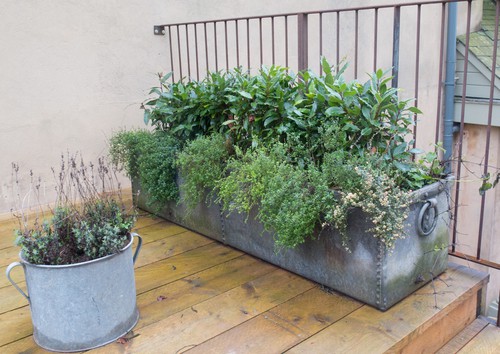
Watering and feeding
If you’re growing them in the ground or in pots, it’s important to keep the plants well-watered, especially during the summer and the growing season. You want to feed them on a monthly basis with a general fertiliser.
Similarly, you want to keep them pruned, which will likely coincide with your need to pick a few leaves for cooking anyway. Young plants can be pruned from late spring and through summer.
Learn more about pruning bay trees in this guide
How to plant Bay trees
When to plant bay trees
If you purchase a younger plant it is best to place them in the ground in the spring once any danger of frost it’s over. This is usually sometime in May for most parts of the UK, maybe a little sooner further south and a little later up north. This will also give your plants enough time to get themselves established before the warmer summer months arrive.
Choosing the right position
Choose a location that is sheltered from very strong winds and has access to full sun. Like most plants, they need good drainage so if your soil isn’t well-drained and you don’t feel like altering the soil you can grow bay trees in pots, as long as you pick containers that are at least 30-40cm across.
Choosing the right compost when growing bay trees in pots
If you grow them in pots we recommend using soil-based compost, something like a John Innes potting compost because it helps to retain the moisture.
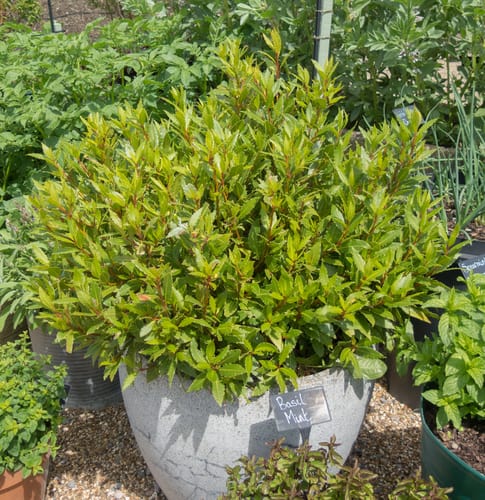
Potential Problems
Scale insects
Like any other plant, bay trees come with an array of potential problems. The biggest issue is going to be scale insects on the underside of the leaves.
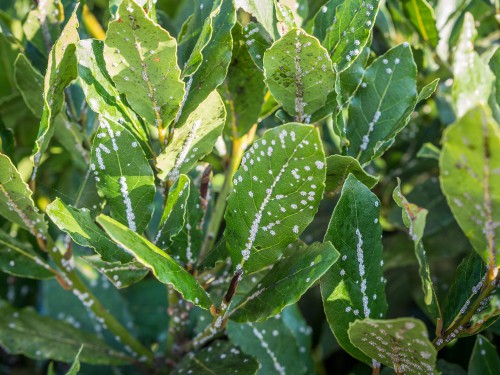
These insects suck the sap out of the leaves and leave in their place honeydew which eventually encourages sooty mould. We recommend spraying the scale insects with a pesticide but be aware they can be a little tricky to control. The pesticides available for you to use will depend on whether or not you harvest the leaves. Remember, many pesticides cannot be used on plants you harvest and eat, including bay trees.
Bay suckers
Similarly, there are sap-sucking insects called bay suckers that result in the discolouration and distortion of your leaves. These tend to attack in the summer and if you don’t treat them they will cause a lot of distortion and discolouration throughout the whole of your tree.
Again, biological measures are best by spraying with a pesticide but it can be difficult to treat with a pesticide designed for edible plants because they often hide within the curled leaves. We recommend spraying with Scots Bug Clear Ultra and this can be effective, even for scale insects.
Sprays for bay trees
Harvesting Bay Leaves
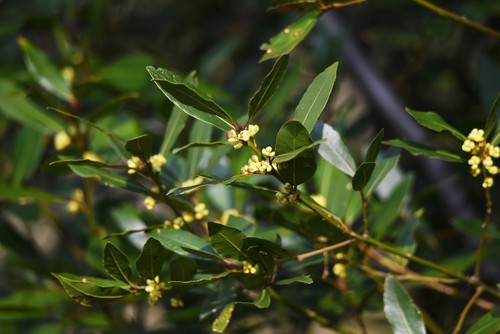
When you are ready to add your bay leaves to a dish or leave them in your home for fragrance, you can harvest them at any time. They work best if they are fresh but you can easily dry branches or individual leaves in a cupboard and then store them in an airtight container so that you can use them throughout the year or give them away as gifts.
It’s best to use dried leaves within one year, after which point their flavour starts to diminish. This is why, if you have an overabundance, especially after pruning it always works well to give them away as gifts.
Last update on 2025-07-04 / Affiliate links / Images from Amazon Product Advertising API




